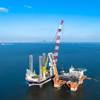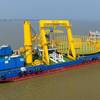DNV Launch Arctic Offshore Structure Design Framework
DNV with key industry players develop an enhanced design framework for structures deployed in open water & harsh areas.
In order to ensure a common, transparent and documented approach to achieving acceptable safety levels for offshore structures in cold-climate regions, a DNV-led joint industry project (JIP), ICESTRUCT, has since 2009 worked to develop a designer-friendly and reliable framework based on the ISO 19906 Arctic Offshore Structure standard.
Per Olav Moslet, Arctic technology research programme director at DNV explains: “The governing design loads for offshore structures in Arctic areas are usually based on interaction with ice, and it is very important that these loads and their effects are treated consistently. Due to the lack of a common industry approach for floating structures in ice, it has previously been difficult for designers to establish the appropriate design loads effects.”
“Because of its nature, ice can generate considerable loads, and structures designed for Arctic operations may look different to structures in open seas. However, ice loads and associated load effects should be treated in the same way as any other environmental load when designing a structure since, in principle, an Arctic offshore structure is no different from any other offshore structure when it comes to assessing adequate structural strength,” he says.
Moslet continues, “The advantage of the new DNV framework is that the same design practice can be used irrespective of the type of structure and environment, Arctic or open sea. That said, the nature and variability of the ice and its complex interaction with structures need to be taken into account,” .






